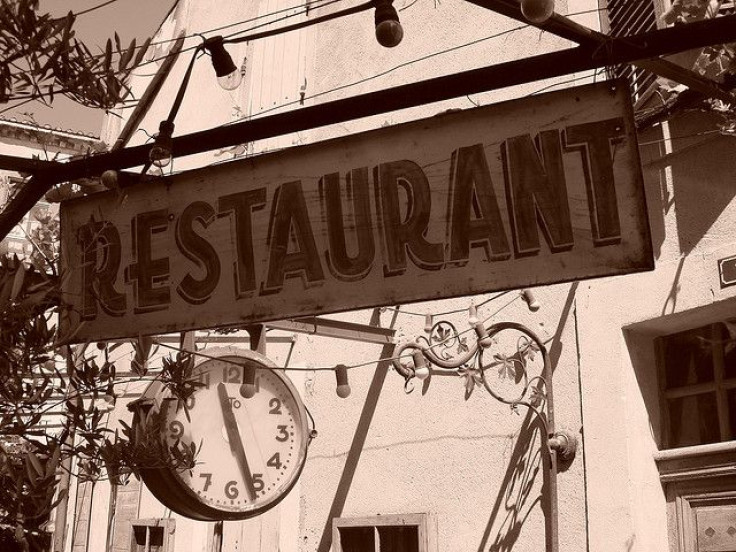Want To Eat Healthier At Restaurants? Bring Healthy Friends

A healthy group of friends may be the key to healthy eating, according to a new study. Researchers from University of Illinois have determined that restaurant patrons who order as a group tend to select the same items from the same menu categories. The peer pressure may even make diners enjoy dishes they would otherwise never order.
The study, which was presented at the Agricultural and Applied Economic Association’s 2013 annual meeting, sought to evaluate how other people’s food choices influence our own. Specifically, the researchers wanted to know why so many restaurant patrons persistently choose to “have whatever someone else is having.” According to Brenna Ellison, food economist and lead author of the study, the phenomenon appears to have less to do with guilt than with a common desire to belong.
"My conclusion from the research is that people want to be different, but not that different," she said in a press release. "We want to fit in with the people we're dining with. It goes against the expectation that people will exhibit variety-seeking behavior; we don't want to be that different from others."
In an attempt to quantify the influence of fellow eaters on vacillating restaurant patrons, Ellison spent three months undercover at a Stillwater, Okla. restaurant whose management had agreed to modify their menus and dining sections for an experiment. One menu contained regular pricing and items; another included calorie counts for each meal; and a third menu had both calorie counts and small traffic light symbols indicating nutritional value. Green, yellow, and red represented a caloric range of 0-400, 401-800, and 800+ respectively.
By analyzing receipts collected at the end of each day, the researchers found that groups ordering from the traffic light menu tended to order items that were in the low caloric range. The tendency was particularly pronounced in larger groups. According to Ellison, this suggests that the average patron did experience a certain degree of peer pressure.
Intriguingly, the findings also indicated that patrons who submitted to peer pressure typically enjoyed their selection – even if that particular item hadn’t appealed to them initially. “The most interesting thing we found was that no matter how someone felt about the category originally, even if it was initially a source of unhappiness, such as the items in the salad category, this unhappiness was offset when others had ordered within the same category," Ellison explained. "Given this finding, we thought it would almost be better to nudge people toward healthier friends than healthier foods."
Source: Ellison, Brenna and Lusk, Jayson L., (2013), “I’ll Have What He’s Having”: Group Ordering Behavior in Food Choice Decisions, No 150266, 2013 Annual Meeting, August 4-6, 2013, Washington, D.C., Agricultural and Applied Economics Association.



























